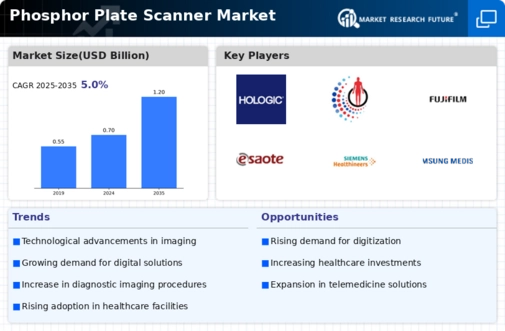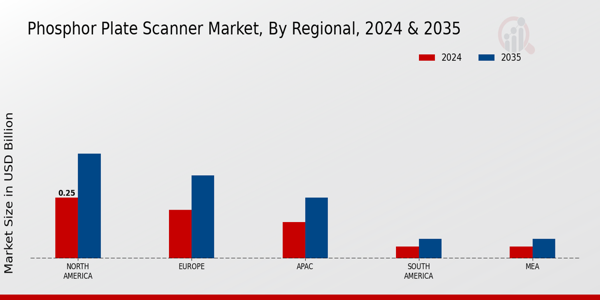The Global Phosphor Plate Scanner Market is characterized by its rapid evolution and the intense competition among various key players that continually strive to enhance their technological offerings. This market, which is closely tied to advancements in digital imaging and healthcare diagnostics, has witnessed significant growth driven by factors such as increasing demand for effective diagnostic tools, technological innovations and an expanding patient population. Competitive insights reveal a landscape marked by strategic partnerships, product differentiation, and a focus on customer satisfaction, ensuring that companies not only compete on price but also on the quality and capabilities of their products.
As companies navigate through regulatory environments and evolving healthcare needs, their ability to adapt and innovate will be crucial in maintaining a competitive edge in this dynamic market.Hologic holds a prominent position in the Global Phosphor Plate Scanner Market, leveraging its strong brand reputation and innovative product lines to cater to the needs of healthcare providers worldwide.
Hologic's focus on women's health, coupled with its advancements in digital imaging technology, has enabled it to develop high-quality phosphor plate scanners that enhance diagnostic accuracy and patient care. The company's commitment to research and development allows for continuous improvement in product performance and reliability, distinguishing its offerings from competitors. Additionally, Hologic benefits from a robust global distribution network and a dedicated customer service approach, which further solidifies its standing within the market.
The integration of advanced features in Hologic's scanners also reflects a proactive response to shifting market demands, enabling the company to meet diverse healthcare applications effectively.Radiology Support Devices has emerged as a notable player in the Global Phosphor Plate Scanner Market, concentrating on delivering high-quality imaging solutions tailored for various radiology applications. The company is recognized for its innovative approach and commitment to enhancing diagnostic workflows through reliable and efficient phosphor plate scanners. By focusing on user-friendly designs and integrating cutting-edge technologies, Radiology Support Devices has garnered attention for its specialized offerings that cater to both clinical and industrial sectors.
Their emphasis on customer feedback and continuous product improvement ensures that they remain attuned to the evolving needs of healthcare professionals. Moreover, the company’s strategic alliances and collaborations with other key industry stakeholders enhance its market presence, positioning it as a trustworthy choice for organizations seeking to upgrade their imaging capabilities. Radiology Support Devices’ reputation for quality and precision in imaging further solidifies its competitive standing in the phosphor plate scanner sector.












